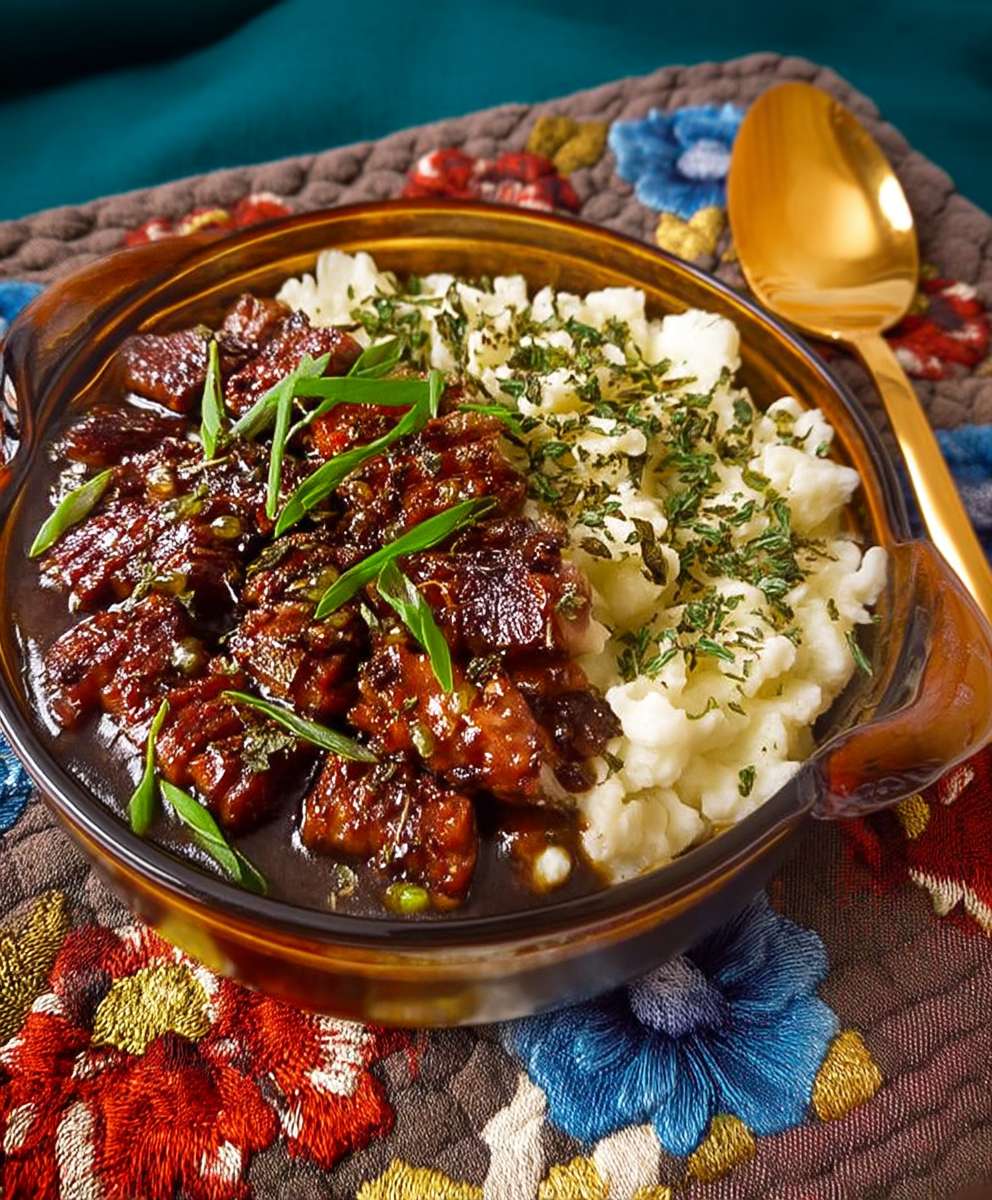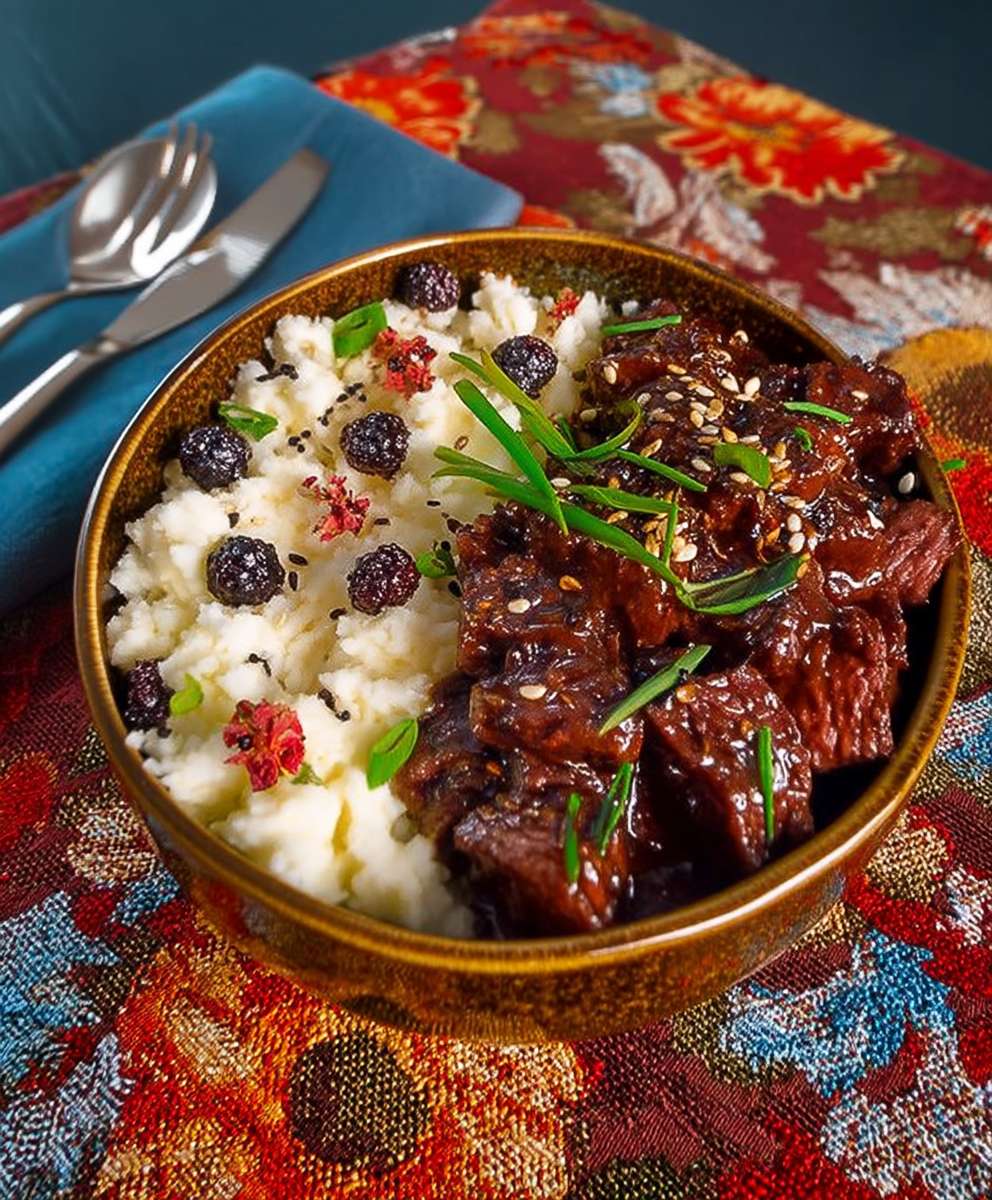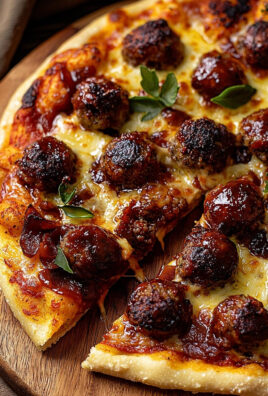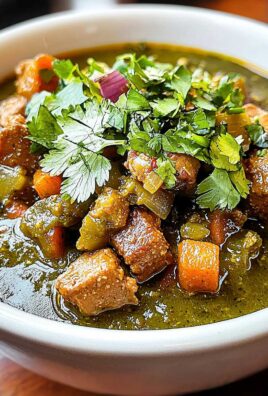Low and slow cooking: the secret to unlocking unparalleled flavor and tenderness in your favorite cuts of meat. Have you ever wondered how restaurants achieve that melt-in-your-mouth brisket or those fall-off-the-bone ribs? The answer, my friend, lies in the magic of patience and controlled heat. It’s a culinary technique that transforms tougher, less expensive cuts into succulent masterpieces.
This method isn’t just a modern trend; it’s deeply rooted in culinary traditions around the world. From the pitmasters of the American South perfecting their barbecue for generations to the slow-cooked stews simmered in earthenware pots across Europe, low and slow cooking has been a cornerstone of comfort food for centuries. It’s a testament to the power of time and gentle heat to break down connective tissues and infuse every fiber with rich, savory goodness.
People adore this style of cooking for so many reasons. The incredible tenderness, of course, is a major draw. But beyond that, it’s the depth of flavor that truly captivates. The extended cooking time allows the spices and seasonings to meld together, creating a symphony of tastes that simply can’t be achieved with quicker methods. Plus, let’s be honest, there’s something incredibly satisfying about setting it and forgetting it allowing you to focus on other things while your kitchen fills with the intoxicating aroma of a culinary masterpiece in the making. So, are you ready to embark on a journey of flavor and discover the joys of slow cooking? Let’s get started!
Ingredients:
- For the Beef:
- 3-4 lb Beef Chuck Roast
- 2 tbsp Olive Oil
- 1 large Yellow Onion, chopped
- 2 Carrots, peeled and chopped
- 2 Celery Stalks, chopped
- 4 cloves Garlic, minced
- 1 tbsp Tomato Paste
- 1 cup Dry Red Wine (such as Cabernet Sauvignon or Merlot)
- 4 cups Beef Broth
- 2 sprigs Fresh Rosemary
- 2 sprigs Fresh Thyme
- 1 Bay Leaf
- 1 tbsp Worcestershire Sauce
- Salt and Black Pepper to taste
- For the Creamy Polenta:
- 1 cup Polenta (coarse ground cornmeal)
- 4 cups Water
- 1 tsp Salt
- 1/2 cup Heavy Cream
- 1/4 cup Grated Parmesan Cheese
- 2 tbsp Butter
- Optional Garnishes:
- Fresh Parsley, chopped
- Grated Parmesan Cheese
- Crusty Bread, for serving
Preparing the Beef:
- Sear the Beef: Pat the beef chuck roast dry with paper towels. Season generously with salt and black pepper on all sides. Heat the olive oil in a large Dutch oven or heavy-bottomed pot over medium-high heat. Once the oil is shimmering, carefully place the roast in the pot and sear on all sides until deeply browned, about 3-4 minutes per side. This step is crucial for developing rich flavor. Don’t overcrowd the pot; you may need to sear the roast in batches. Remove the roast from the pot and set aside.
- Sauté the Vegetables: Add the chopped onion, carrots, and celery to the Dutch oven. Cook over medium heat, stirring occasionally, until the vegetables are softened and slightly caramelized, about 8-10 minutes. This process, known as mirepoix, forms the aromatic base of the braise.
- Add Garlic and Tomato Paste: Add the minced garlic and tomato paste to the pot. Cook for another minute, stirring constantly, until fragrant. The tomato paste will deepen the color and add a subtle sweetness to the sauce.
- Deglaze the Pot: Pour in the dry red wine and scrape the bottom of the pot with a wooden spoon to loosen any browned bits (fond). This is where a lot of flavor resides! Let the wine simmer for 2-3 minutes, allowing the alcohol to evaporate slightly.
- Add Broth and Seasonings: Pour in the beef broth. Add the rosemary sprigs, thyme sprigs, bay leaf, and Worcestershire sauce. Stir to combine.
- Return the Beef to the Pot: Place the seared beef roast back into the Dutch oven, ensuring it is mostly submerged in the liquid. If necessary, add a little more beef broth to cover.
Low and Slow Cooking Process:
- Braise in the Oven: Cover the Dutch oven with a tight-fitting lid. Transfer the pot to a preheated oven at 325°F (160°C). Braise for 3-4 hours, or until the beef is fork-tender. The exact cooking time will depend on the size and thickness of the roast. Check the roast after 3 hours; it should be easily pierced with a fork.
- Shred the Beef: Once the beef is cooked, carefully remove the Dutch oven from the oven. Let the roast rest in the braising liquid for about 15-20 minutes. This allows the juices to redistribute, resulting in a more tender and flavorful roast. Using two forks, shred the beef into bite-sized pieces directly in the pot.
- Skim the Fat (Optional): If desired, skim off any excess fat from the surface of the braising liquid using a spoon or ladle. This will result in a cleaner and less greasy sauce.
- Simmer the Sauce: Place the Dutch oven over medium heat on the stovetop. Simmer the sauce for 10-15 minutes, allowing it to reduce slightly and thicken. This will concentrate the flavors and create a richer, more intense sauce. Remove the rosemary sprigs, thyme sprigs, and bay leaf before serving.
Preparing the Creamy Polenta:
- Bring Water to a Boil: In a medium saucepan, bring the water and salt to a boil over medium-high heat.
- Whisk in Polenta: Gradually whisk in the polenta, ensuring there are no lumps. Reduce the heat to low and continue to whisk constantly for the first few minutes to prevent sticking.
- Simmer and Stir: Once the polenta is smooth, reduce the heat to the lowest setting. Cover the saucepan and simmer for 20-25 minutes, stirring occasionally to prevent sticking. The polenta should be thick and creamy.
- Stir in Cream, Cheese, and Butter: Remove the saucepan from the heat. Stir in the heavy cream, grated Parmesan cheese, and butter until well combined and the cheese is melted. Taste and adjust seasoning with salt and pepper as needed. The polenta should be luxuriously creamy and flavorful.
Assembling and Serving:
- Serve Immediately: Spoon the creamy polenta into bowls. Top with the shredded braised beef and plenty of the rich sauce.
- Garnish (Optional): Garnish with fresh chopped parsley and extra grated Parmesan cheese, if desired.
- Serve with Bread (Optional): Serve with crusty bread for soaking up the delicious sauce.
Tips for Success:
- Choose the Right Cut of Beef: A chuck roast is ideal for braising because it has a good amount of marbling, which renders during the long cooking process, resulting in a tender and flavorful roast. Other cuts that work well include brisket or short ribs.
- Don’t Skip the Searing: Searing the beef is essential for developing a deep, rich flavor. Make sure to get a good sear on all sides before adding the vegetables.
- Use a Good Quality Red Wine: The red wine adds depth and complexity to the sauce. Choose a dry red wine that you would enjoy drinking, such as Cabernet Sauvignon or Merlot.
- Low and Slow is Key: Braising is a slow cooking method, so be patient. The longer the beef cooks, the more tender and flavorful it will become.
- Adjust the Sauce: If the sauce is too thin, you can simmer it for a longer period of time to reduce it. If it’s too thick, you can add a little more beef broth.
- Make Ahead: The braised beef can be made ahead of time and stored in the refrigerator for up to 3 days. Reheat gently before serving. The polenta is best served immediately, but can be reheated with a little extra liquid if necessary.
- Customize the Flavors: Feel free to add other vegetables to the braise, such as mushrooms or potatoes. You can also experiment with different herbs and spices, such as smoked paprika or chili powder.
- Polenta Consistency: The consistency of the polenta is a matter of personal preference. If you prefer a thicker polenta, use less water. If you prefer a thinner polenta, use more water.
- Don’t Stop Stirring: When making the polenta, it’s important to stir it frequently to prevent it from sticking to the bottom of the pot.
Variations:
- Spicy Braised Beef: Add a pinch of red pepper flakes or a chopped jalapeño pepper to the braise for a spicy kick.
- Mushroom Braised Beef: Add 8 ounces of sliced mushrooms to the pot along with the onions, carrots, and celery.
- Italian Braised Beef: Add a can of diced tomatoes and a teaspoon of dried oregano to the braise.
- Creamy Parmesan Polenta with Truffle Oil: Drizzle a small amount of truffle oil over the polenta before serving for an extra touch of luxury.
Serving Suggestions:
- Serve the braised beef and polenta as a main course for a comforting and satisfying meal.
- Serve the braised beef over mashed potatoes or rice instead of polenta.
- Use the braised beef as a filling for tacos or enchiladas.
- Serve the braised beef on toasted bread as a hearty appetizer.

Conclusion:
This isn’t just another recipe; it’s an invitation to experience the magic of low and slow cooking. The depth of flavor achieved through this method is simply unparalleled. The way the ingredients meld together, creating a symphony of tastes and textures, is something you truly have to experience to believe. From the initial prep to the final, mouthwatering bite, this recipe promises a culinary journey that’s both rewarding and incredibly delicious.
But why is this recipe a must-try? Because it’s more than just food; it’s an experience. It’s about taking the time to savor the process, to appreciate the transformation of simple ingredients into something extraordinary. It’s about creating a dish that’s not only delicious but also deeply satisfying. It’s about bringing people together around a table to share a meal that’s been lovingly prepared. And let’s be honest, who doesn’t love a dish that practically cooks itself? The hands-off nature of low and slow cooking allows you to focus on other things while your kitchen fills with the most incredible aromas.
And the best part? This recipe is incredibly versatile. While I’ve outlined my favorite way to prepare it, feel free to experiment and make it your own. For a spicier kick, add a pinch of cayenne pepper or a few chopped jalapeños. If you’re looking for a sweeter note, a drizzle of honey or maple syrup can work wonders.
Serving Suggestions and Variations:
* Classic Comfort: Serve it over creamy mashed potatoes or polenta for a truly comforting meal.
* Taco Tuesday: Shred the meat and use it as a filling for tacos or burritos. Top with your favorite salsa, guacamole, and sour cream.
* Sandwich Sensation: Pile the meat high on a toasted bun with coleslaw and barbecue sauce for a delicious pulled meat sandwich.
* Pasta Perfection: Toss the meat with your favorite pasta and a rich tomato sauce for a hearty and flavorful pasta dish.
* Grain Bowl Goodness: Combine the meat with quinoa, roasted vegetables, and a tangy vinaigrette for a healthy and satisfying grain bowl.
Don’t be afraid to get creative and adapt the recipe to your own tastes and preferences. The possibilities are endless! You can even try different cuts of meat, experiment with different spice blends, or add other vegetables to the mix. The key is to have fun and enjoy the process.
I truly believe that this recipe will become a staple in your kitchen. It’s easy to make, incredibly delicious, and perfect for any occasion. Whether you’re cooking for a crowd or just for yourself, this recipe is sure to impress.
So, what are you waiting for? Gather your ingredients, fire up your oven or slow cooker, and get ready to experience the magic of low and slow cooking. I can’t wait to hear what you think! Please, try this recipe and share your experience in the comments below. Let me know what variations you tried, what serving suggestions you loved, and any other tips or tricks you discovered along the way. Your feedback is invaluable, and I’m always eager to learn from my readers. Happy cooking!
Low and Slow Cooking: The Ultimate Guide to Tender, Flavorful Meats
Tender, slow-braised beef chuck roast in a rich red wine sauce, served over creamy Parmesan polenta. A comforting and flavorful meal perfect for a cozy night in.
Ingredients
- 3-4 lb Beef Chuck Roast
- 2 tbsp Olive Oil
- 1 large Yellow Onion, chopped
- 2 Carrots, peeled and chopped
- 2 Celery Stalks, chopped
- 4 cloves Garlic, minced
- 1 tbsp Tomato Paste
- 1 cup Dry Red Wine (such as Cabernet Sauvignon or Merlot)
- 4 cups Beef Broth
- 2 sprigs Fresh Rosemary
- 2 sprigs Fresh Thyme
- 1 Bay Leaf
- 1 tbsp Worcestershire Sauce
- Salt and Black Pepper to taste
- 1 cup Polenta (coarse ground cornmeal)
- 4 cups Water
- 1 tsp Salt
- 1/2 cup Heavy Cream
- 1/4 cup Grated Parmesan Cheese
- 2 tbsp Butter
- Fresh Parsley, chopped
- Grated Parmesan Cheese
- Crusty Bread, for serving
Instructions
- Pat the beef chuck roast dry with paper towels. Season generously with salt and black pepper on all sides. Heat the olive oil in a large Dutch oven or heavy-bottomed pot over medium-high heat. Once the oil is shimmering, carefully place the roast in the pot and sear on all sides until deeply browned, about 3-4 minutes per side. Remove the roast from the pot and set aside.
- Add the chopped onion, carrots, and celery to the Dutch oven. Cook over medium heat, stirring occasionally, until the vegetables are softened and slightly caramelized, about 8-10 minutes.
- Add the minced garlic and tomato paste to the pot. Cook for another minute, stirring constantly, until fragrant.
- Pour in the dry red wine and scrape the bottom of the pot with a wooden spoon to loosen any browned bits (fond). Let the wine simmer for 2-3 minutes, allowing the alcohol to evaporate slightly.
- Pour in the beef broth. Add the rosemary sprigs, thyme sprigs, bay leaf, and Worcestershire sauce. Stir to combine.
- Place the seared beef roast back into the Dutch oven, ensuring it is mostly submerged in the liquid. If necessary, add a little more beef broth to cover.
- Cover the Dutch oven with a tight-fitting lid. Transfer the pot to a preheated oven at 325°F (160°C). Braise for 3-4 hours, or until the beef is fork-tender. Check the roast after 3 hours; it should be easily pierced with a fork.
- Once the beef is cooked, carefully remove the Dutch oven from the oven. Let the roast rest in the braising liquid for about 15-20 minutes. Using two forks, shred the beef into bite-sized pieces directly in the pot.
- If desired, skim off any excess fat from the surface of the braising liquid using a spoon or ladle.
- Place the Dutch oven over medium heat on the stovetop. Simmer the sauce for 10-15 minutes, allowing it to reduce slightly and thicken. Remove the rosemary sprigs, thyme sprigs, and bay leaf before serving.
- In a medium saucepan, bring the water and salt to a boil over medium-high heat.
- Gradually whisk in the polenta, ensuring there are no lumps. Reduce the heat to low and continue to whisk constantly for the first few minutes to prevent sticking.
- Once the polenta is smooth, reduce the heat to the lowest setting. Cover the saucepan and simmer for 20-25 minutes, stirring occasionally to prevent sticking. The polenta should be thick and creamy.
- Remove the saucepan from the heat. Stir in the heavy cream, grated Parmesan cheese, and butter until well combined and the cheese is melted. Taste and adjust seasoning with salt and pepper as needed.
- Spoon the creamy polenta into bowls. Top with the shredded braised beef and plenty of the rich sauce.
- Garnish with fresh chopped parsley and extra grated Parmesan cheese, if desired.
- Serve with crusty bread for soaking up the delicious sauce.
Notes
- A chuck roast is ideal for braising because it has a good amount of marbling.
- Searing the beef is essential for developing a deep, rich flavor.
- Choose a dry red wine that you would enjoy drinking, such as Cabernet Sauvignon or Merlot.
- Braising is a slow cooking method, so be patient.
- If the sauce is too thin, you can simmer it for a longer period of time to reduce it. If it’s too thick, you can add a little more beef broth.
- The braised beef can be made ahead of time and stored in the refrigerator for up to 3 days.
- The polenta is best served immediately, but can be reheated with a little extra liquid if necessary.
- Feel free to add other vegetables to the braise, such as mushrooms or potatoes.
- The consistency of the polenta is a matter of personal preference.
- When making the polenta, it’s important to stir it frequently to prevent it from sticking to the bottom of the pot.





Leave a Comment